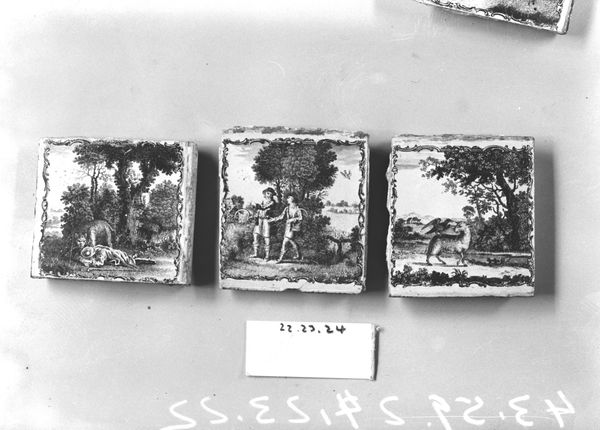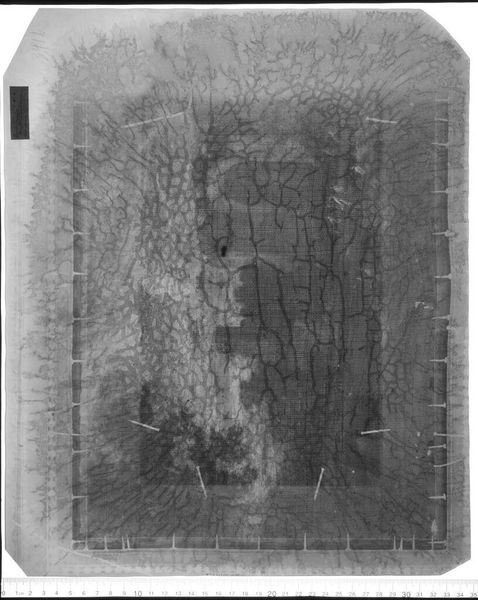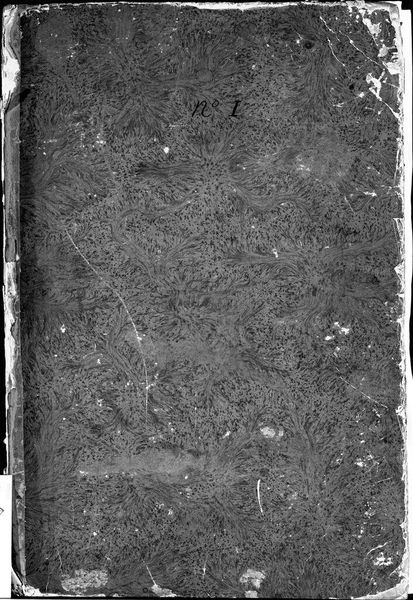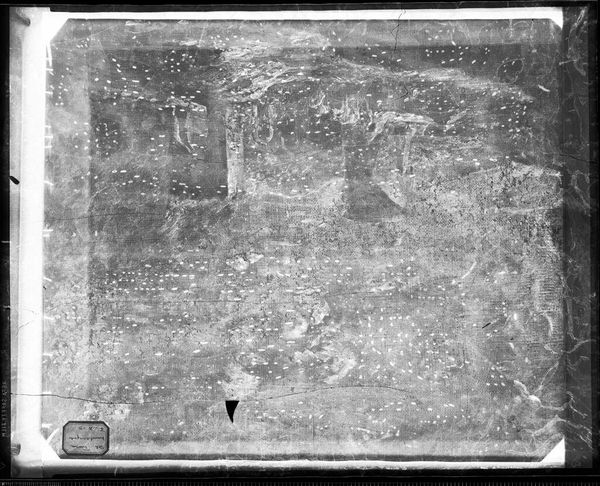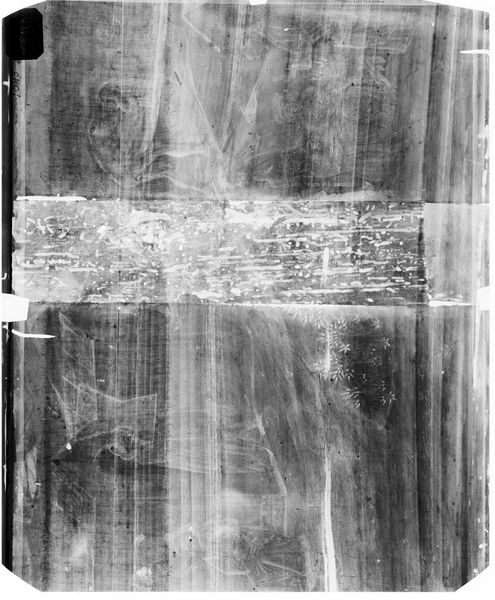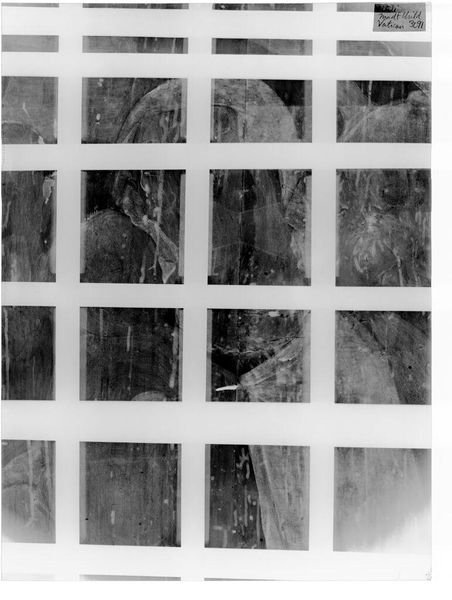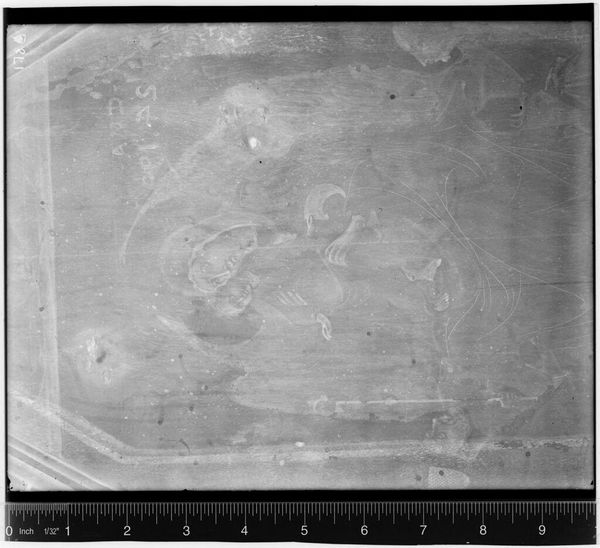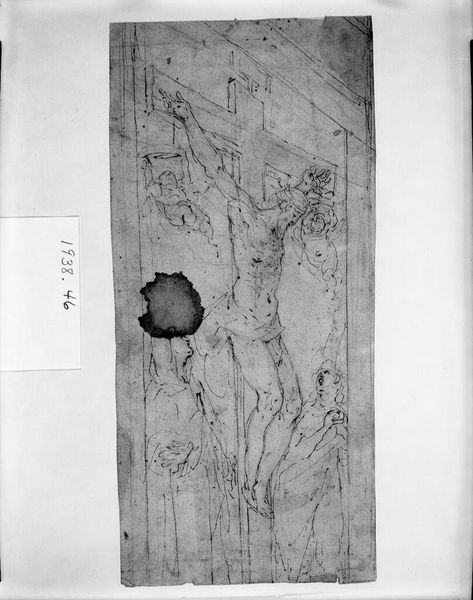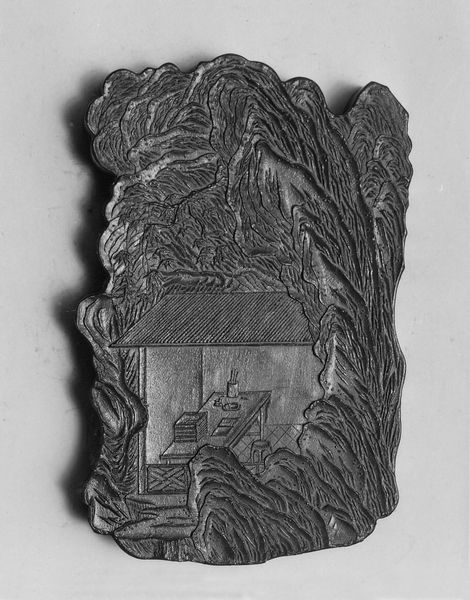
sculpture
#
pencil drawn
#
medal
#
pencil sketch
#
incomplete sketchy
#
house
#
charcoal drawing
#
charcoal art
#
sketchwork
#
forest
#
hand drawn
#
detailed observational sketch
#
sculpture
#
men
#
decorative-art
#
charcoal
#
pencil art
#
angel
Dimensions: 2 1/16 × 3 15/16 in. (5.2 × 10 cm)
Copyright: Public Domain
Curator: We're looking at "Abraham and the three Angels", a 16th-century piece by Peter Flötner, housed right here at the Metropolitan Museum of Art. It presents a scene with several detailed panels. Editor: My immediate impression is of intricate labor—the metalwork is incredibly detailed, almost like miniature stage sets. Each panel feels self-contained yet part of a larger narrative. Curator: Exactly! Consider the context of 16th-century Europe: religious narratives were deeply woven into the social fabric. These panels wouldn't just be aesthetic; they would reinforce religious and moral codes for viewers, especially surrounding themes of hospitality and divine visitation. Editor: And the material itself—probably lead or pewter—would have been relatively accessible to artisans of the period, bridging a gap between luxury items for the elite and more widely available forms of devotional art. How do the techniques employed—the carving, the casting—inform our understanding of artistic labor at the time? Curator: Well, thinking about the social hierarchy, who was commissioning such works? How did the artist’s role intersect with that of the patron and the societal expectations for religious representation? This scene of Abraham is rarely just about surface piety. Editor: Right. The repetition of certain motifs - trees, houses, figures - across the panels invites us to read these pieces as components within a larger system of meaning-making, speaking to contemporary understandings of home, land and community. How were Flötner's designs informed by pre-existing cultural and economic power structures? Curator: Also, remember the power dynamics embedded in representing biblical figures. Were these accessible and empowering depictions for women, for example? Or did they simply reinforce patriarchal interpretations of scripture? The narrative has very different undertones when you ask who gets to tell it. Editor: That makes me wonder: who were the intended audiences for this piece and other works like it? Would it have served a specific religious community, or circulated more broadly as a form of moral or cultural capital? We also have to ask if materials that remain preserved erase different approaches tied to a particular moment in time. Curator: Right. These are precisely the points of intersection between art history and contemporary thought. By understanding these works within intersectional narratives focusing on identity, we begin to grasp their true significance and impact. Editor: Agreed. Looking through the lens of production, consumption, and the distribution of art reveals it not only as aesthetic output, but as material embedded with social relations and historical contingency. It prompts deeper questions. Curator: Examining 'Abraham and the three Angels' forces us to reconsider the assumed objectivity of art, compelling richer investigations of meaning-making and cultural significance. Editor: Absolutely. This piece really illuminates not only 16th-century artistry, but the enduring complexities of labor, material culture, and social context of that era.
Comments
No comments
Be the first to comment and join the conversation on the ultimate creative platform.

